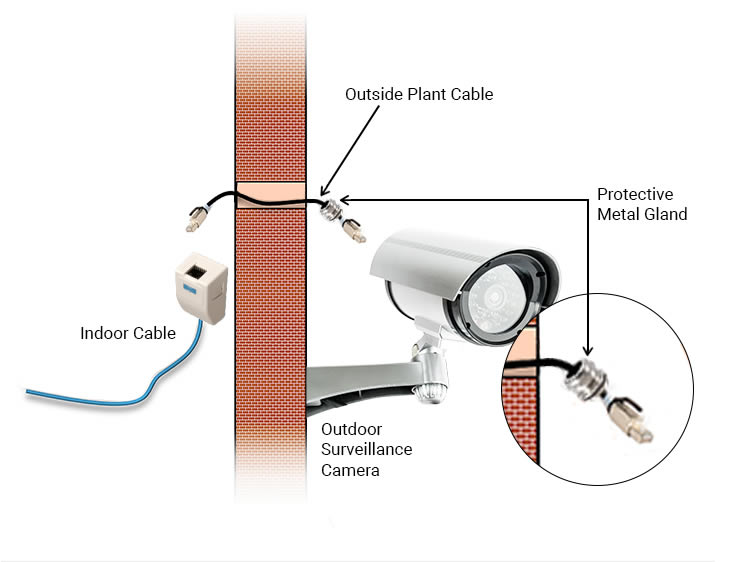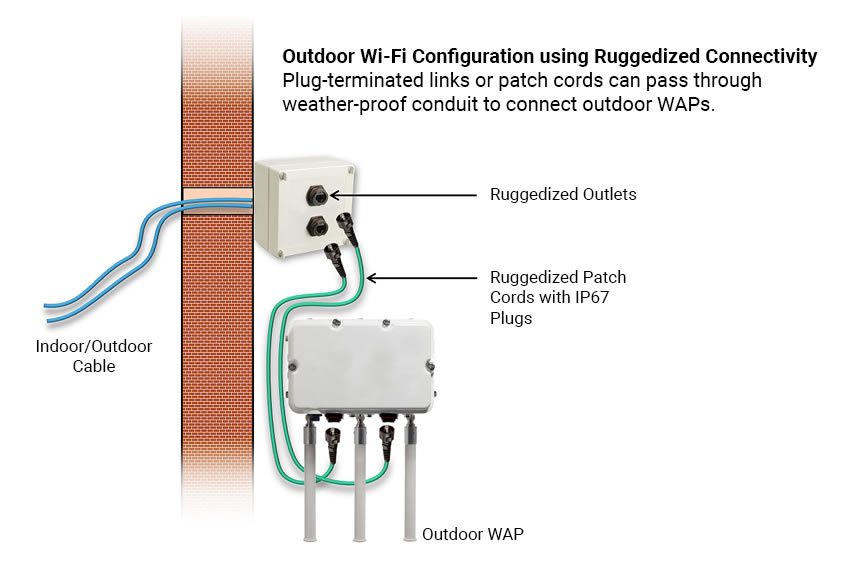How to connect Outdoor IP Devices?
Filed under: General
Comments: Comments Off on How to connect Outdoor IP Devices?

The increased need for Data and Security and convergence of IP networks is resulting in more devices than ever connecting via the structured cabling system. From a wireless access point (WAP) to an intelligent lighting system, or PoE clocks and AV over IP systems, structured cabling is now supporting, with the help of remote power, almost all building automation systems. With so many elements involved and the network reach expanding to new areas of your work environments you will find that many of those devices required to secure a building asset such as CCTV cameras and access control panels might be installed outside the building. A recurring question we hear from many organizations is “how should we best support a cabling system outside a building knowing that standard LSOH cables are not suitable for an Outdoor environment?”.
Options For Supporting Your Outdoor Devices
There are a variety of options to connect outdoor devices mounted on the outside of buildings or poles. In terms of topology, good practice would be to use consolidation points (CP) installed near outside entry points to enable the use of outside plant (OSP) cable from there. Outside plant cable is the perfect cable type for external environments but the standards restrict the use of OSP cables inside a building by 2 meters due to their non-LSOH construction. If the link to the outdoor device requires cable to be deployed in direct burial, lashed aerial, or underground conduit applications which are subject to moisture and UV radiation, OSP cable is required and must transition from indoor cable at the building entrance.

However, Siemon can provide Indoor/outdoor cable ideal for indoor riser/cable trays and outdoor applications such as outdoor security cameras, WAPs, and parking garages where the cable is not subject to long-term emersion. The I/O cable meets the IEC LSOH rating as well as the EU CPR Dca rating, which allows more flexibility in the cabling infrastructure and potentially uses the same cable along with the full permanent link.

At the device level, the outlet, cords, or plugs need to be rated for the intended environment. Ruggedized IP67 cabling components are available to serve those devices, but in many cases the use of the recently released MPTL topology would simplify and secure the cabling system. The MPTL topology eliminates the service outlets, the housing box, and the patch cord, connecting the end device directly with a plug terminated on the OSP or I/O installation cable. Like our Z-PLUG™, in combination with our metallic gland, it will support a majority of outside configurations using I/O or OSP cable with the promise of reaching high-performance signals of category 6A required for more and more applications.

For remote security devices located beyond 100 meters, hybrid copper/fiber cable can be used to provide both network connectivity and remote power. Devices with a copper port only, hybrid power/fiber cable can terminate to a PoE media converter placed within a NEMA enclosure. The PoE media converter transforms the optical signal and provides both a data and PoE connection for the device, which is connected to the converter using a copper patch cord.
So, in summary, it is clear that there is a range of options that can be deployed for a wide variety of indoor/outdoor application environments. As a technology leader in the structured cabling industry, Siemon provides a range of solutions and support services for a wide range of I/O applications designed to support your organization no matter what.
Explore how we can support your applications in our deep-dive application guides:
